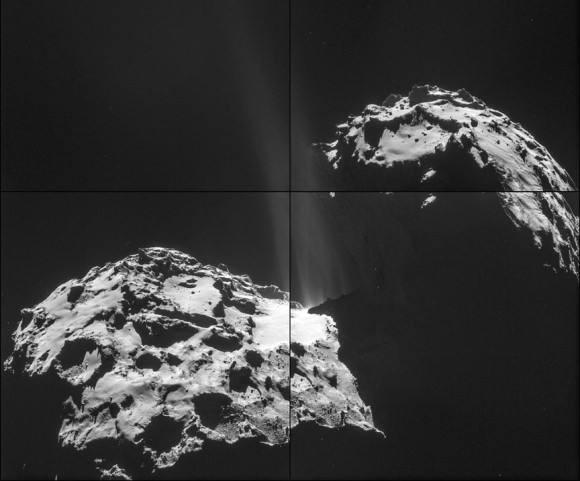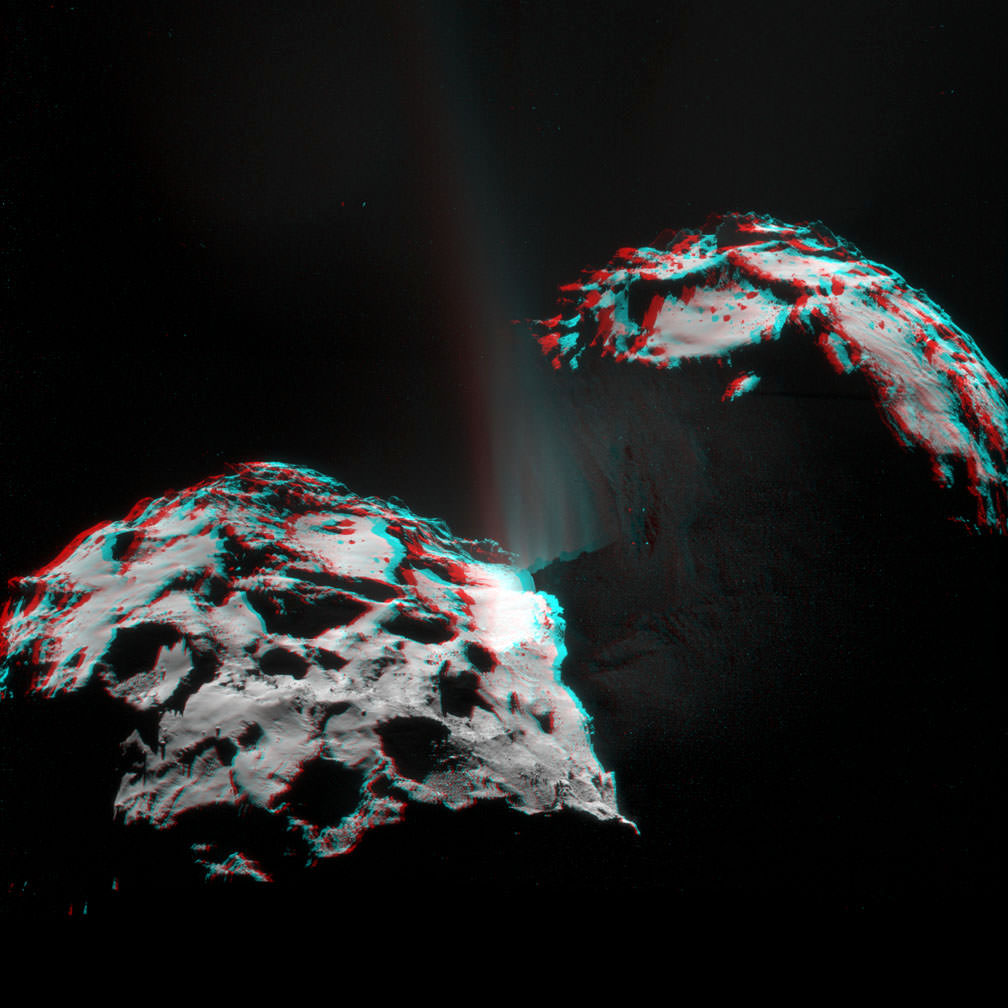She’s gonna blow! Rosetta’s navigation camera recently grabbed our best view yet of the geyser-like jets spraying from the nucleus of Comet 67P/Churyumov-Gerasimenko. They were taken on September 26 as the spacecraft orbited the comet at a distance of just 16 miles (26 km) and show jets of water vapor and dust erupting from several discrete locations beneath the surface along the neck region of the comet’s nucleus. Mattias Malmer, a 3D technical director, created the spectacular 3D views by draping the navigation camera images over a 3D model of the comet and then photographing it from two slightly different perspectives.

Jets form when the sun warms the comet’s coal-black surface, causing ices beneath to sublimate or change directly from solid to gas without becoming liquid. This is possible because of the near-zero atmospheric pressure at the comet. Pressure builds in the pockets of gas until they find escape through cracks or pores as plume-like jets. Comet dust along with the gas fashions the coma and tail over time. Something similar happens when you shake up a bottle of champagne and then loosen the cork. Trapped carbon dioxide (what makes the “fizz”) blasts the cork across the room.
Comet Churyumov-Gerasimenko rotating from darkness into light. (Mattias Malmer)
If you liked the still images, check out these videos by Malmer. He used the same draping technique and then animated the stills. Be sure to stop by his Cascade of Light blog for more images and videos when you get a chance.
Comet Churyumov-Gerasimenko rotating in 3D (Mattias Malmer)
I saved the best for last. What majesty!
3D rotation of Comet 67P/C-G with jets (Mattias Malmer)

